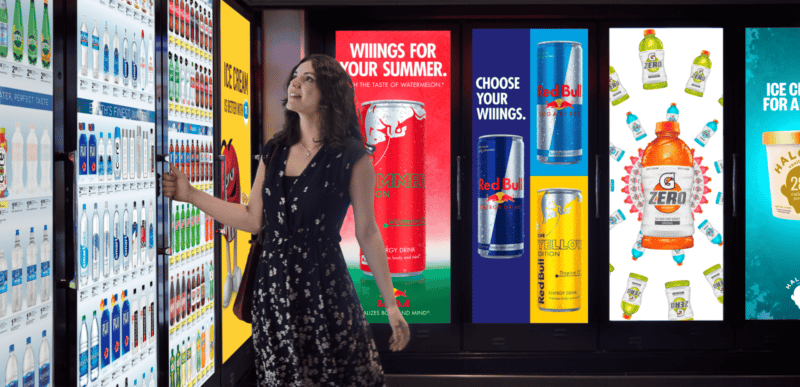
Retail media networks (RMNs) are a hot new thing that’s been around for decades. Its roots go back to brands putting ads on store end caps and paying for placement in retailers’ weekly fliers. But, like everything else in marketing, digital took it into a whole different realm.
What are retail media networks?
Simply put, these networks are a platform that lets brands buy advertising on a retailer’s website, apps and other digital properties, including in-store. More importantly, it also lets them run ads on the open web. Retailers can partner with media companies and give brands expanded reach and improved targeting with the use of in-depth shopper data.
What was once a staid addition to marketing campaigns is now a major focus of brands and retailers.
“We want to create more meaningful intersections between our partners and customers,” says Charlene Charles, head of Dollar General’s DG Media Network Operations. “A brand wants to engage with the customer and give them the best cereal or the best personal care item. We want to reach those hard-to-reach customers in rural America … making sure that we get [them the] brands and products they want, need and desire. It’s really core to our overall pursuit to serve our communities and our customers, but now we’re doing that through a different channel.”
What makes them valuable to retailers?
Dollar General is a great example of what makes a retail media network valuable. It has a deep relationship with consumers who are difficult to reach through other channels. Of the chain’s more than 18,000 stores, 75% serve markets of 20,000 or fewer people. Because of this, it can provide brands with hard-to-get, first-person consumer data. That’s the kind of unique reach brands want.
“When you look at impression volume and delivery what ends up happening is it’s concentrated in major mass-market urban areas,” says Charles. “However you’re not capturing everyone, right? And because we have identified and can reach 90% of our customers through paid media, we are extending reach that’s unduplicated in rural areas.”
Dig deeper: Marriott launches its own media retail network
In return, DG gets to provide customers with offers they want to see and discounts they might otherwise miss – further strengthening the relationship. It also gets one other thing: money, a lot of money.
While DG doesn’t break out how much they are earning from its media network, it’s likely quite a bit. Walmart’s network, Walmart Connect, is responsible for 12% of the company’s profits. One-quarter of retailers are generating more than $100 million in revenue from their media networks, according to Forrester. That’s made these networks a game changer for many retailers – and a potential lifeline in a worsening economy. Retail profit margins tend to be slim – in the 3% to 4% range. The margin on ad sales is usually 70% to 90%, according to BCG. And sales are very good.
According to MediaRadar:
In the eight months from May 1, 2021 to the end of January 2022, more than 23,500 companies bought ads on retail media networks.
14% bought ads every month; the retention rate from December to January was 59%.
24% of the companies advertising in January 2022 were first-time buyers.
Furthermore, the retail media market will grow by 25% per year to $100 billion over the next five years and will account for over 25% of total digital media spending by 2026, according to BCG. Also important: This is new revenue for retailers. Per BCG: 60% to 70% of the projected $100 billion in 2026 retail media revenue will be net new spending over and above historical trade dollars.
What makes them valuable to brands?
The value of retail media networks to brands goes well beyond first-party data. They also make it easier to tie ad spend to sales. An online ad and the point of sale are so close together, it’s much easier to connect a purchase to a specific ad and action. This provides essential data for strategic decisions like resource allocation. It also provides essential data in the never-ending quest for ROI.
That said, not everyone will strike gold. For retailers, these networks require technological infrastructure and expertise few have.
“If you’re a retailer and want to enter this space, you have to really understand that it’s crowded now,” says Matt Feczko, vice president for product management at Epsilon, a marketing technology company. “It’s very competitive and you have to ask yourself, ‘Do I have the data to do this? Do I even have the people or technology?’”
For brands, there are several different challenges. One is integrating with a new media network: How do they do ad sales? Is it something your existing tech can easily work with? Another is being sure the retailer’s data is what you need. Does it have a unique reach? Does it have the depth and granularity that will make it useful?
Retail media networks have turned retailers into ad moguls. That’s a huge change and nobody yet understands all the implications of it. They are also spurring a lot of innovation as marketers rush to capitalize on them. While much of that is online, it’s also happening with in-store.
“It used to be that in-store was just printed things, like end caps where it’s just a big standing thing,” says Feczko “Now it’s moving into this interesting digital space like cooler screens.”
Specifically, Walgreens has a display screen for coolers that shows an exact digital image of what is in the cooler – as you can with clear glass. However, it also runs an ad or offer for a specific brand while the customer is deciding what to buy.
If there’s a downside to the popularity of retail media networks, it’s the chance that they could grow in number to the point where the amount of inventory outstrips demand. Currently, however, they are proving a boon for marketers and retailers alike.
Challenges
Despite all these positives, there are still reasons for marketers to approach RMNs carefully. For one thing, it’s still a relatively young channel with a lot of technical challenges.
“It is the biggest trend happening in advertising right now,” said Michael Greene, SVP of vertical strategy for Criteo. “At the same time, it is still an incredibly immature area of the market. I mean, we have virtually any retailer that sells third-party brands participating. But, you run the gamut of everybody from Amazon — who’s been doing this for years and has built this into a foundation of their business strategy, to the companies beginning to enter the space. The brands are immature as well. They’ve invested pretty much based on where the early entrants are, but that doesn’t necessarily match where their shoppers are.”
The biggest problem is the lack of standardization in systems and measurements. Nearly 70% of RMN buyers said “complexity in the buying process” was the biggest obstacle to the growth of RMNs, according to a 2023 IAB study of 200 advertisers and agencies who spend $5 million or more annually in RMNs. The next biggest obstacle, chosen by 62% of buyers, is the lack of measurement standards.
Source: IAB and BWG Strategy: “Retail Media 2023: Operational Strategies to Meet the Growth Potential.”
Brands and agencies that were buying from a handful of RMNs a couple of years ago are now buying from dozens to hundreds of different retailers globally. RMNs, unlike other digital ad publishers, do not have standardization in pretty much anything. From ad size and formatting to interaction with programmatic sellers, everyone has their own set of technical specifications.
“One of the unique technical challenges about the retail media space compared to the traditional publishing space,” said Greene, “is if you’re a conventional publisher sure, you may have subscription revenue or other secondary revenue sources, but your primary source of revenue is ads. So as you think about how to build the end-user experience, the viewer experience, it’s built with ads in mind.
“But retailers are trying to manage a much trickier set of conflicting goals. Because, as important as retail media is to them, their primary source of revenue is selling products. So there’s this very careful balancing act for every retailer between how do I create an ad experience that is complementary to my actual business of selling products, but at the same time is in line enough with standards and easy enough to buy that brands don’t have to go and reinvent creative every time they want to run something on my site.”
Solutions
Fortunately, all sides have a big incentive to fix this: Revenue.
In September of this year, the IAB, in collaboration with the Media Rating Council (MRC), released a draft of the IAB/MRC Retail Media Measurement Guidelines for public comment and feedback. The comment period closes in mid-October.
The guidelines focus on four key areas:
Transparency and consistency: Clear definitions and methodologies should be the norm, enabling stakeholders to easily compare metrics.
Accuracy and reliability: Employ robust methodologies and technologies designed to minimize errors and adapt to evolving landscapes.
Privacy and security: Comply with privacy regulations like GDPR and CCPA and implement stringent security measures to protect user data.
Compliance with industry standards: Align with best practices as established by MRC, IAB, and other industry bodies.
Data accuracy: The guidelines call for regular calibration and validation of RMN measurement tools and methodologies. RMNs should also maintain consistent data collection processes for both internal and audit purposes. Additionally, RMNs are referred to IAB Tech Lab’s Spiders and Bots List to filter out invalid traffic. RMNs are also encouraged to compare data against known benchmarks to identify and correct potential biases and inaccuracies.
In-store measurement: The guidelines cover in-store digital place-based (DPB) environments as well. For instance, in-store zones must be established at the physical location in order to attribute foot traffic and sensor data to specific screens where ads are shown. While the new guidelines break down how retailers can apply taxonomy and measurement to visual, as well as audio, ads, RMNs are referred to the MRC Digital Place-Based Audience Measurement Standards for further guidance about exposure and ad impressions in physical locations.
These guidelines and the mutual interests of all parties promise a reasonably fast solution to RMNs’ technical issues.
Additional resources
Source: martech.org



